The Serene Splendor of the Salty Salton Sea

Salton Sea

The Salton Sea is one of the world's largest inland seas as well as being one of the lowest spots on Earth, sitting at 227 feet (69 meters) below sea level. It is located in southeastern California just north of the rich agricultural lands of the Imperial Valley. The sea lies along the famous San Andreas Fault and occupies the southern part of the Salton Basin and an area that once was the prehistoric Lake Cahuilla.
Salton Sea

The Salton Sea is actually a part of the Colorado River Delta. During the past 1,000 years, the course of the Colorado River has actually changed westward three times, filling the Salton Basin with a fresh water lake, Lake Cahuilla . When the river returned to its ancient channel to the east, the fresh waters of Lake Cahuilla quickly evaporated under the hot, Sonoran Desert sun.
Salton Sea

In 1905, the Colorado River was once again raging on its journey to the Sea of Cortes. Massive flooding along the southern banks of the great river broke though the man-made irrigation canal system and Colorado River water rushed once again into the Salton Basin for 18 months. The result was the creation of the Salton Sea, California's largest lake.
Salton Sea

The Salton Sea is currently 35 miles (56 kilometers) long by 15 miles (24 km) wide but can grow to 40 miles (64 km) long by 20 miles (32 km) wide during extremely wet years. It has an average depth of 30 feet (9 m) and is 51 feet (15.5 m) deep at its southern end. At 227 feet below sea level, it is only 6 feet (1.8 m) higher than the lowest point in Death Valley . Since its creation, the sea has remained filled primarily by agricultural return flow from the Imperial, Coachella and Mexicali Valleys. The annual inflow to the Salton Sea is about 420 trillion gallons (1,600 trillion liters) of water, which carries about 4,000,000 tons of dissolved salt and tens of thousands of tons of fertilizers into this unique, landlocked lake.
Salton Sea
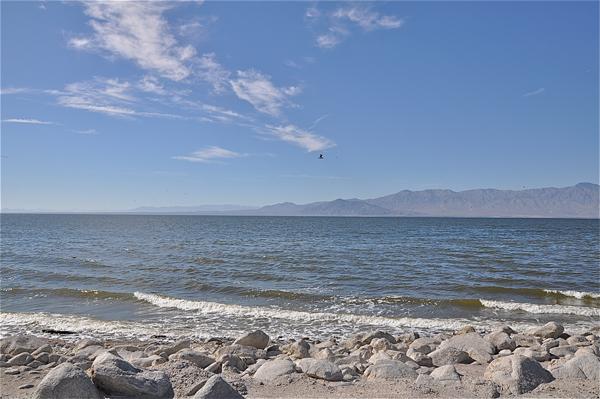
With such a yearly influx of dissolved salts, the salinity of the Salton Sea is constantly on the rise. Currently the salt level is near 44 grams per liter, which is greater than the Pacific Ocean (at 35 grams per liter). In the 1950s, the Salton Sea was stocked with many varieties of saltwater fish and the sea became a popular spot for fishermen. But as the salinity level rises each year, fewer species of fish can survive. Biologists fear that the African tilapia, first introduced into the sea in 1964 and which can live in salinity up to 60 grams per liter, may soon be the only sport fish capable of surviving. [Related: Why Are Oceans Salty?]
Salton Sea
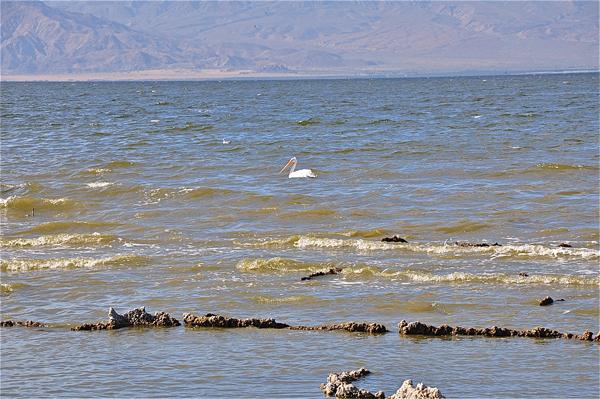
The Salton Sea is a vital stop-over for birds using the Pacific flyway during their migration. With the rapid loss of natural wetlands in California, the sea has come to play a life-saving role for the millions of birds representing 380 different species that stop and overwinter along the 110 miles (177 km) of shoreline. Thirty percent of the surviving population of American white pelicans makes their home here. The Sea is also home to an endangered population of Desert pupfish. The Sonny Bono Salton Sea National Wildlife Refuge is located at the southern end of the sea and is only 40 miles (64 km) from the international border with Mexico.
Salton Sea
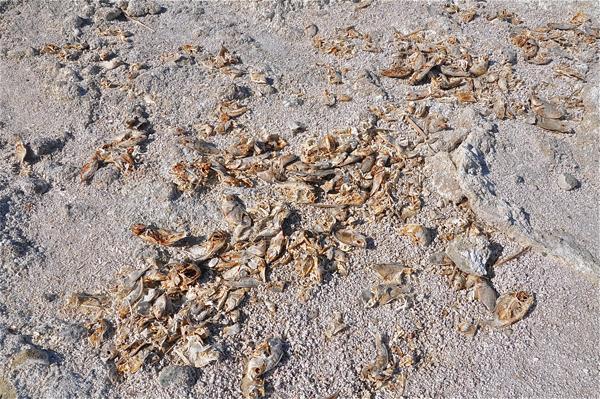
The Salton Sea has several serious challenges that scientists continue to try to solve. Since the sea has no outlets, not only does its salinity continue to rise but so too does its high level of nutrients. Such a rich body of water can result in an explosion of fish populations which can be good for fisherman but can also result in periodic mass fish die-offs due to de-oxygenation of the water, thought to be caused by dead algae and the decomposition of organic sediment.
Get the world’s most fascinating discoveries delivered straight to your inbox.
Salton Sea
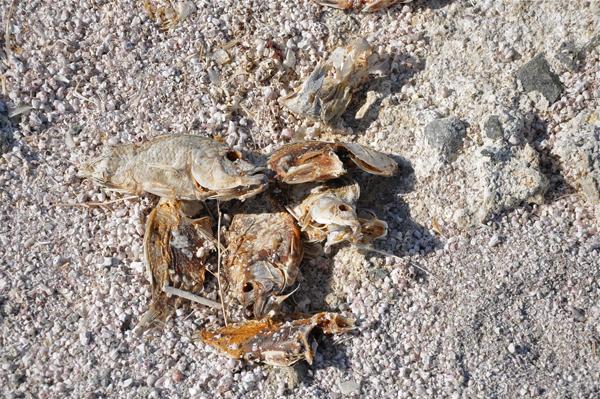
The cold, desert nights during the winter months can drop the sea's water temperature so low that the African tilapia cannot survive. Winter often sees a massive die-off of this favorite sport fish. Bird species have also experienced severe die-offs, with possible causes being toxins from a red tide and even avian botulism. Recently the Vibrio alginolyticus bacteria has been discovered in dead pelicans found along the shore. Vibrio is a common bacteria in saltwater species of fish and is always fatal to the fish it infects.
Salton Sea

Because it lies along the southeast boundary of the ever-active San Andreas Fault, the Salton Sea's elevation is slowly rising. This rise has resulted in homes and recreational businesses being abandoned due to flooding. In addition, nearly 10 to 15 percent of the inflow into the Salton Sea originates in Mexico. It is carried to the sea by the New River, which has been called the most polluted river in America . Improved procedures in the Mexican city of Mexicali have resulted in a greatly diminished inflow of bacteria and pollutants into the Salton Sea in recent years though.
Salton Sea
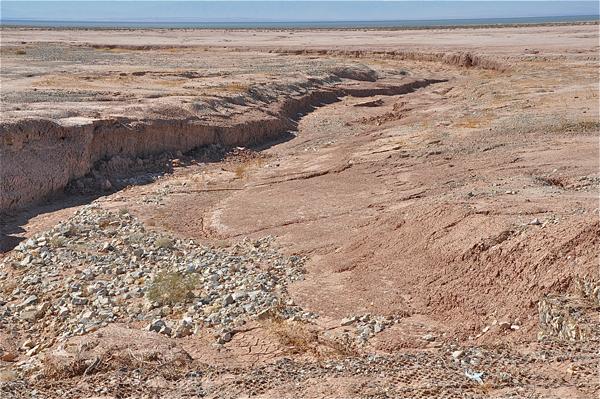
Only three rivers flow into the Salton Sea the New, Whitewater and Alamo rivers and their inflow into the sea is very seasonal. The Whitewater River is a small, permanent stream whose headwater is located in western Riverside County. Near Palm Springs, Calif., the stream joins the San Gorgonio River before losing its southward journey and its waters sink into the hot desert lands, recharging the groundwater of the Coachella Valley.
Salton Sea
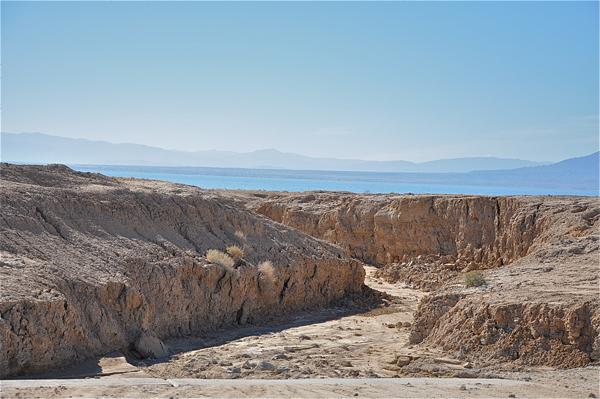
Many desert arroyos are found leading into the Salton Sea, some of significant size and giving testimony to just how much water desert thunderstorms can produce and the incredible force of running water. These arroyos lie dry most of the year but can create roaring, local flash floods when a summer thunderstorm passes nearby.


